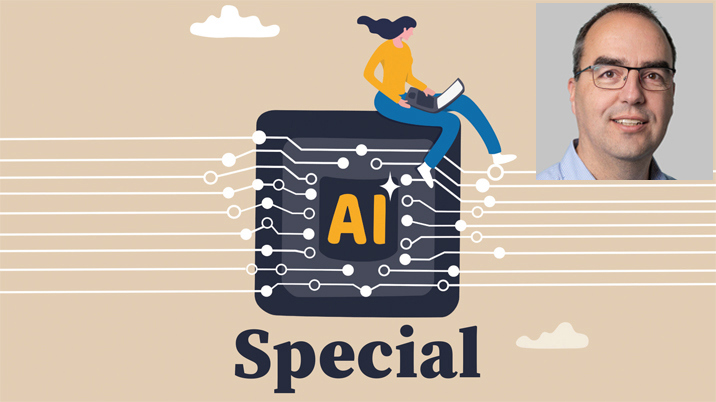
Q: How are publishers currently using AI for content optimisation?
A: Research from Accenture shows that generative AI could impact 44% of all working hours in various industries. It’s currently the biggest game changer within the publishing sector. But how do you implement AI responsibly and in such a way that it works for your business?
Content is too valuable only to be published once. Publishing it to various channels or re-using it in various titles over time is best. However, content nowadays is re-used without fully optimising it for the alternative channel(s) or title(s) because of the manual work involved. This is where AI can help the editor; think, for example, of:
- Optimising a story created for print to be published to digital channels. This includes creating SEO-optimised titles and headlines, but also choosing a different length for the article.
- Translating content into a different language.
- Rewriting a story using a different tone of voice or for a different audience.
Secondly, AI can help in the proofing process by checking for spelling, grammar, and tone of voice inconsistencies.
AI can be a game changer in time-consuming content tasks. For instance, it can assist in copy-fitting an article under a tight deadline. However, it’s important to note that due to its hallucinatory nature, AI can’t be fully trusted with fact-checking. It can, however, extract claims from an article, providing valuable support in the process.
An important takeaway is that you get the best results if you combine the power of AI with human creativity and a critical human perspective. Ensure that AI supports and enhances the creative process. Content created solely by AI often fails to trigger the right emotional connection with the reader. When used as a co-pilot, it offers, however, great potential to increase both efficiency and creativity.
Q: What will be possible in the future?
A: Soon, it will technically be possible to hyper-personalise content and tailor it exactly to the reader’s preferences, device, and the time the content is consumed. Whether or not this becomes a reality largely depends on legal frameworks like the requirements in the EU AI Act to mark AI-generated content. Public opinion also plays an important role here. Do we trust AI-generated content, or will human oversight always be required?
Only time will tell… but follow the developments closely to prevent being blindsided. Transparency is key in any scenario.
Three top tips
- The adoption of AI must be navigated with a focus on ethics, compliance, and responsibility to ensure it integrates smoothly into your organisational processes. The best way to do this is using an experimentation mindset to take your staff along the journey of AI and, together, explore what works for your situation. However, also set guardrails and define policies to prevent reputational damage. Organisations could face legal risks and financial or other damage when they publish incorrect information. Please note this is especially challenging when working with external content partners. You must ensure that their standards align with yours.
- Human oversight is not just a requirement; it’s a crucial part of the AI adoption process. The content generated by AI sometimes lacks the right level of emotion, and AI can be biased or even hallucinate. While hallucination can typically be quickly spotted, bias can be very subtle and not visible at first glance. It requires a trained eye to detect and correct. This is one of the reasons why AI can’t replace a human fact check or review process, emphasising the importance of your role in this process. Be, however, very careful when redesigning your content workflows. You must ensure that the human editors don’t become the “review-robots”. This would be counterproductive and a recipe for failure.
- Understanding the legal implications of the EU AI Act and its influence on your use of AI is of utmost importance. The parliament passed the Artificial Intelligence Act in March 2024, which will be fully applicable within the next 24 months. However, some provisions, such as the ban on AI systems posing an unacceptable risk and the codes of practice, are applicable sooner. Grasping these implications will equip you with the knowledge needed to navigate the changing regulatory landscape. Ensure all implications of an AI service are fully understood by everyone within your organisation. The reality is that most teams already use AI today to optimise (or create) content without the proper guidance. In practice, we see that 93% of organisations are not ready for AI. Investing in guardrails, policies and tooling to easily train and update your staff on the responsible use of AI and any changes to your policies is crucial.
Tom and the other contributors to our AI Special took part in an ‘AI Special – Q&A’ webinar on Wednesday, 26 June. You can watch the recording by registering here.

About us
WoodWing provides the technology for publishers to create exceptional content – at scale. Our integrated solutions allow you to create, collaborate on, and manage content in one experience, enabling a shorter time-to-market, and easy optimisation for every channel. WoodWing was founded in 2000 and has a global workforce exceeding 200 employees.
Website: www.woodwing.com
LinkedIn: www.linkedin.com/company/woodwing
This article was included in the AI Special, published by InPublishing in June 2024. Click here to see the other articles in this special feature.










